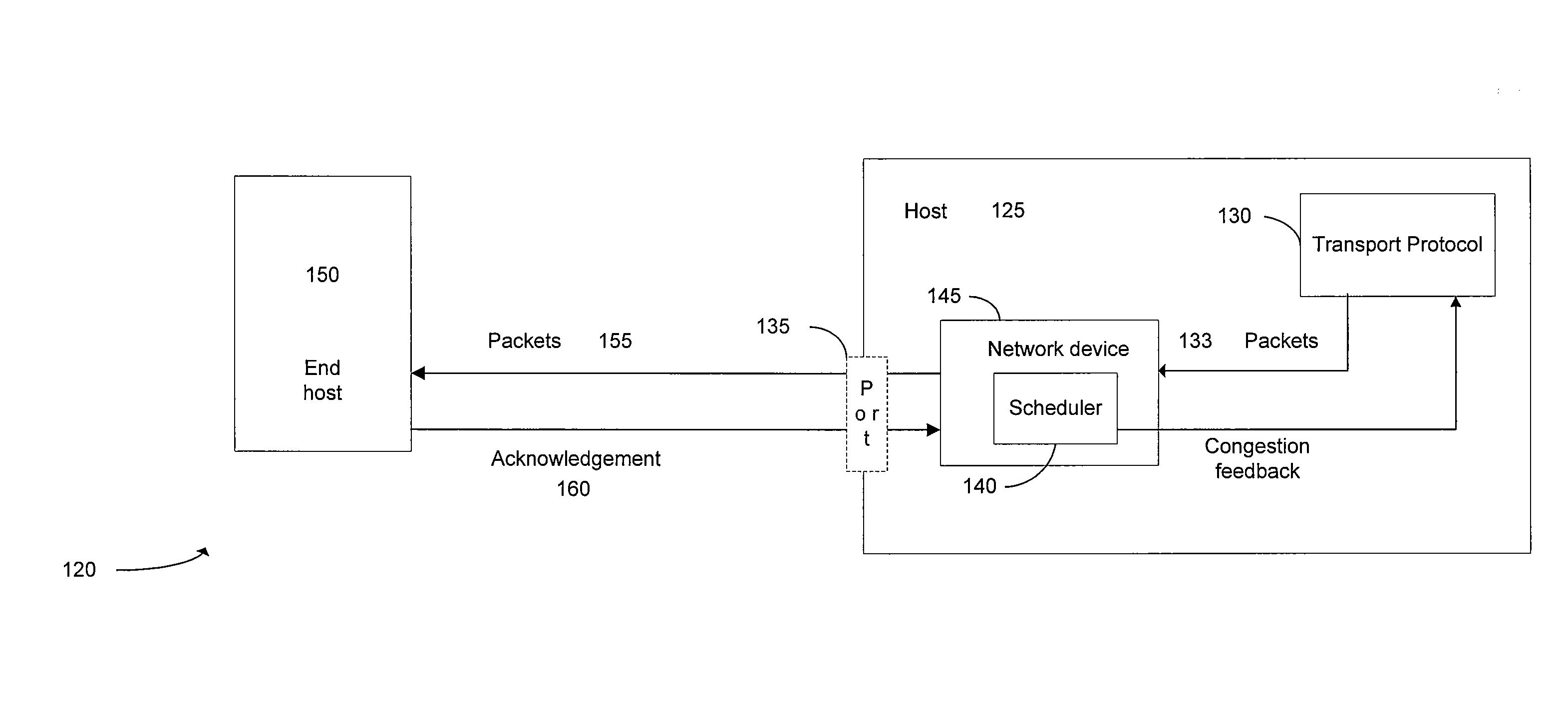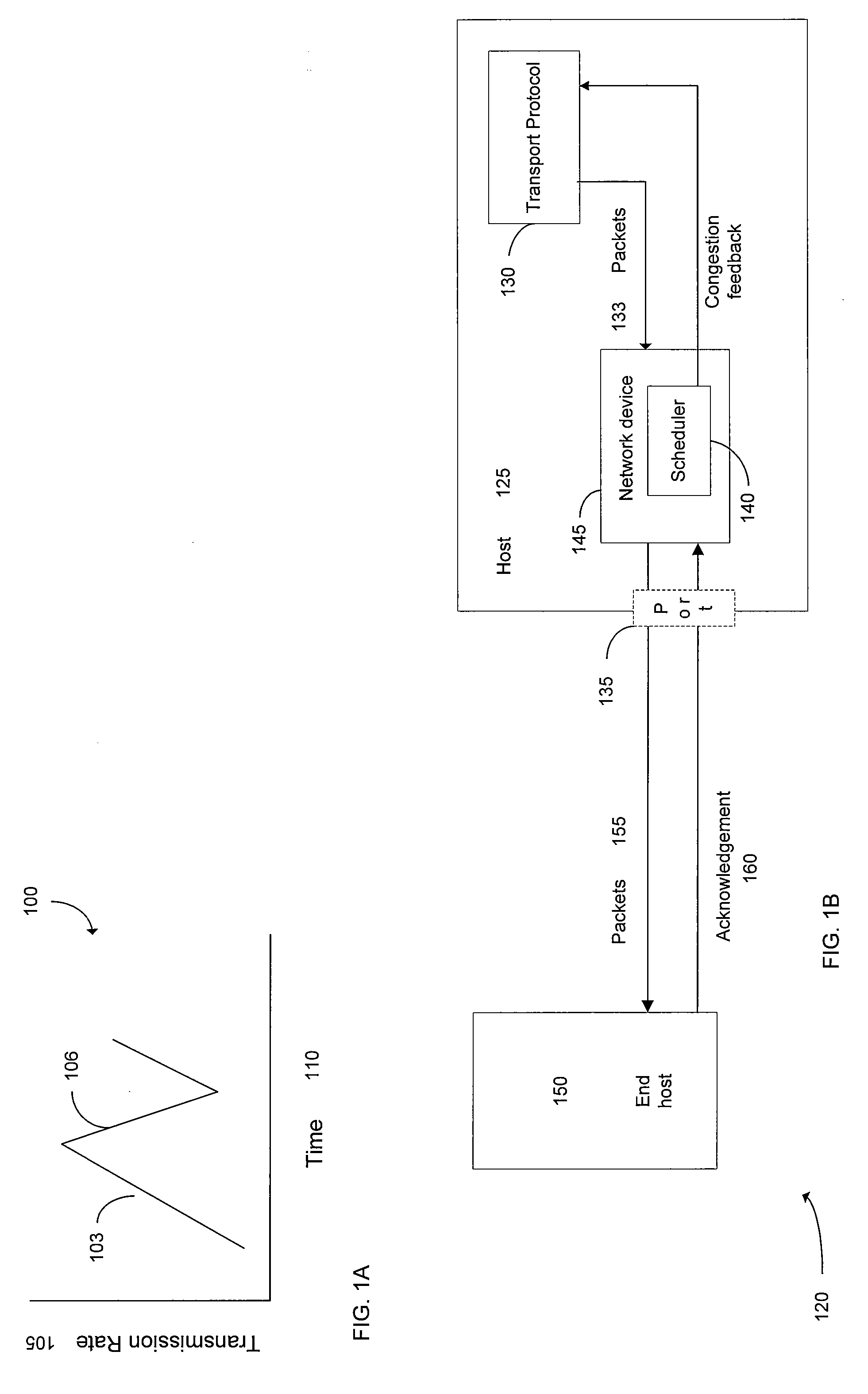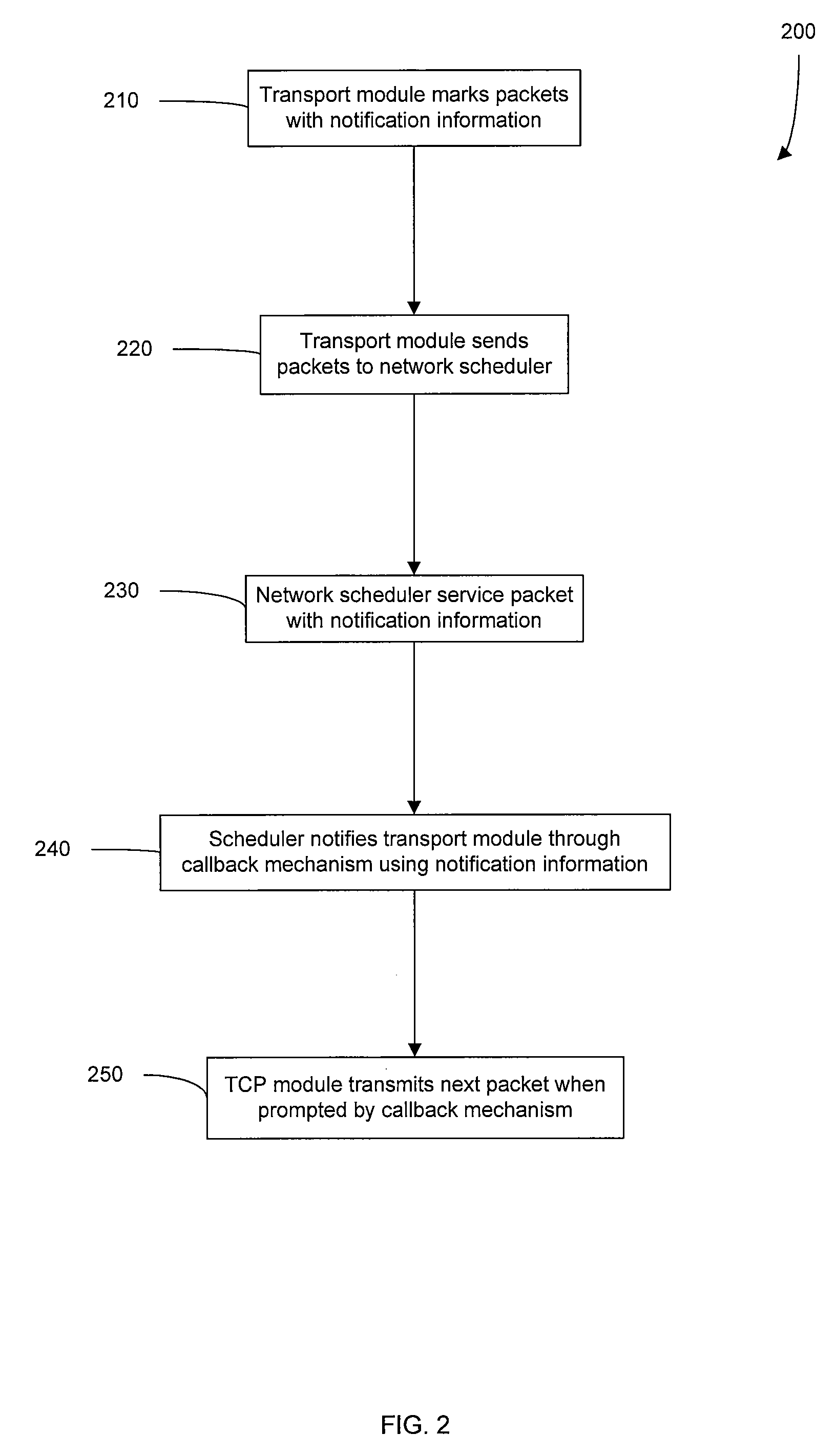Cooperative operation of network transport and network quality of service modules
a network transport and service module technology, applied in data switching networks, frequency-division multiplexes, instruments, etc., can solve the problems of reducing throughput, reducing the efficiency of network transport, and reducing so as to improve the performance of tcp, the effect of efficient and flexible networking quality of servi
- Summary
- Abstract
- Description
- Claims
- Application Information
AI Technical Summary
Benefits of technology
Problems solved by technology
Method used
Image
Examples
Embodiment Construction
[0037]Embodiments of the invention provide efficient and flexible networking quality of service as well as transport protocol design. In one embodiment, a hybrid transport / network quality of service (HNTQ) scheme improves the performance of TCP over specific links or network paths that are subject to high latency, a high bandwidth-delay product, high packet loss, and / or bit errors. In one aspect, a callback mechanism is used between a packet scheduler and a transport module to control the transmission rate of packets across one or more connections or links.
I. INTRODUCTION
[0038]Traditionally, the network functions and the transport functions are deliberately separated. Oftentimes the “end to end” argument of Saltzer et al. has been used to argue that as much complexity as possible should be pushed out of the network and into the end hosts. As a result, QoS mechanisms in routers are deliberately kept as simple as possible and mechanisms like connection management, reliable delivery, c...
PUM
 Login to View More
Login to View More Abstract
Description
Claims
Application Information
 Login to View More
Login to View More - R&D
- Intellectual Property
- Life Sciences
- Materials
- Tech Scout
- Unparalleled Data Quality
- Higher Quality Content
- 60% Fewer Hallucinations
Browse by: Latest US Patents, China's latest patents, Technical Efficacy Thesaurus, Application Domain, Technology Topic, Popular Technical Reports.
© 2025 PatSnap. All rights reserved.Legal|Privacy policy|Modern Slavery Act Transparency Statement|Sitemap|About US| Contact US: help@patsnap.com



